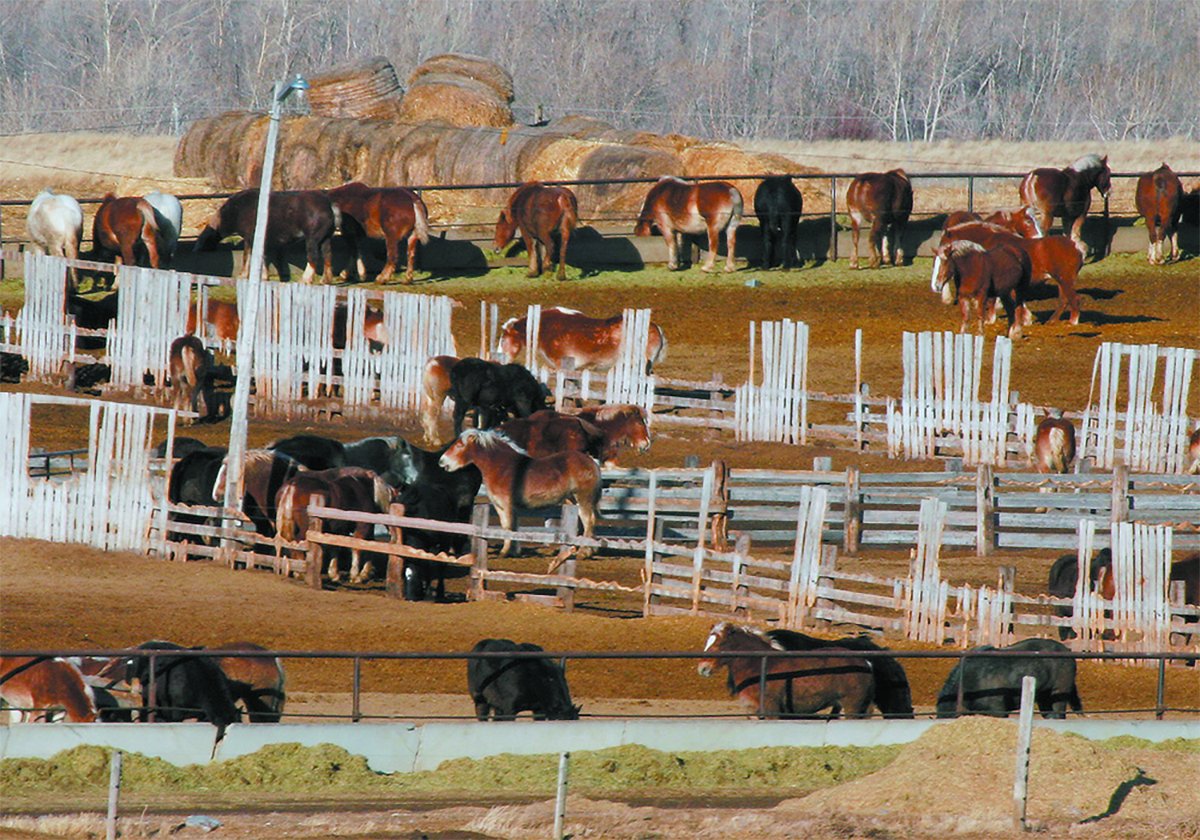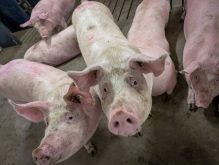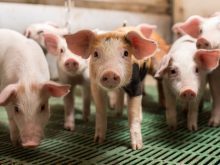RED DEER – A new farming wisdom is needed when switching from conventional to organic production.
“What works for an organic producer is not going to work for a conventional producer and vice versa,” says soil scientist Jill Clapperton of Agriculture Canada’s Lethbridge research centre.
Her research involves a long-term program accumulating data on organic and low-input farming. The goal is to build soil productivity and reduce input costs for conventional and organic farming.
For those in the transition stage to organic production, attention to weed and disease control must be balanced with trying to restore a healthy soil structure.
Read Also

Canada’s slaughter horse industry lacks transparency
The lack of clear reporting and public access to data keeps the industry largely hidden, leaving questions about humane treatment and traceability unanswered.
One aspect of her program uses sweet clover as a cover crop and mulch, she told the Alberta Organic Association convention held in Red Deer Feb. 10-11.
Her team underseeds sweet clover to its crops for weed control and nitrogen deposition.
Later in the season the clover is mowed and left as a mulch. The land is direct seeded the following year.
“What we have succeeded in doing with the sweet clover is allowing a reduced tillage operation to move almost to direct seeding in some cases,” she said.
Clapperton’s team has learned organic farmers don’t have enough cover crop choices in Western Canada.
Sweet clover has been their best option. Ryegrass and fenugreek did not work well for restoring soil quality.
Since the project started five years ago, the researchers learned they need more diverse rotations to deal with insect infestations, diseases and drought.
Some crops were infested with parasitic nematodes that create little holes in the roots and permit diseases to infect the plant. A new project is planned for this spring to examine nematode reactions in the soil.
The researchers know some plots in their rotations have nematodes that feed on bacteria. Tilled plots have more bacteria but plots with more residue tend to have a more fungal base that discourages bacteria.
This supports the argument for minimum and no-till management. Organic farming often includes tillage, but it can be managed, she said.
“If you can create a rich organic matter, you build resilience and resistance into your soil that will allow you a certain amount of disturbance,” she said.
“That doesn’t mean eight passes with a double disk. You can do reasonable tillage as long as you are using cover crops, as long as you are putting that organic matter on the surface.”
Ultimately, she hopes to eliminate fallow fields from the project.
Support for cover crops, mulches and creative rotations comes from research at the Organic Agriculture Centre of Canada, attached to the Nova Scotia agricultural college.
Ralph Martin, who heads the centre’s research programs, encourages farmers to grow forage crops. However, many organic producers do not keep livestock or grow forages as part of their normal rotations.
“A lot of organic farms have no forage or livestock. They are trying to get away with cropping all the way through.”
He said livestock can include poultry, hogs or cattle.
“If you are not going to use the forages to feed the livestock, then hopefully we can find ways you can use it in mulches to keep those forages on the farm.”
Recent research showed forage-based mulches provided more benefits in Manitoba test plots than they did in Nova Scotia. Researchers are not sure why, but plan to continue their trials.
So far they have learned litter is capable of contributing 12 kilograms of nitrogen per acre.
“With the mulch, the yields of the cereals were higher,” Martin said.
Mulch can also control weeds and hold soil moisture by preventing transpiration in dry years.
In addition to building a layer of litter, forages in the rotation help break disease and weed cycles as growers move from conventional to organic production.
Increased seeding rates are another way to drive out weeds and disease. However, this involves some experimentation.
“If you bring up the seeding rate too high, you might have more of a problem with disease,” Martin said.
“In an organic system it is very important to get local systems that work in a specific soil and climatic region.”

















